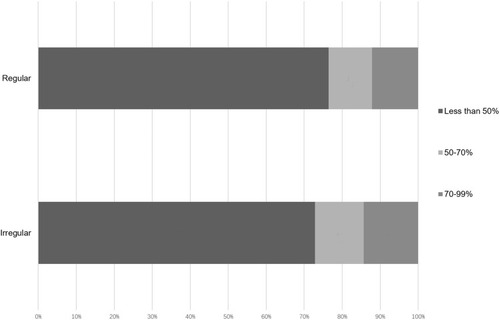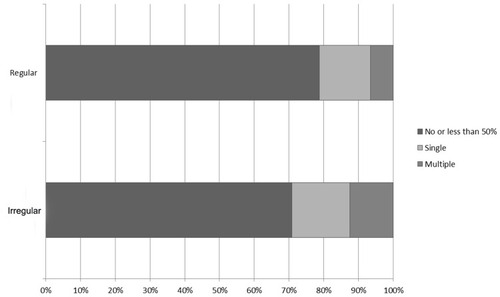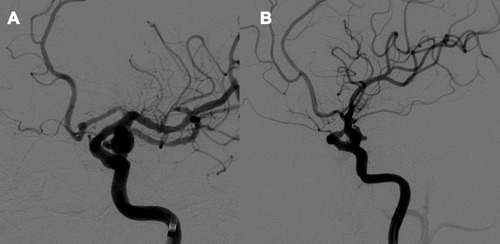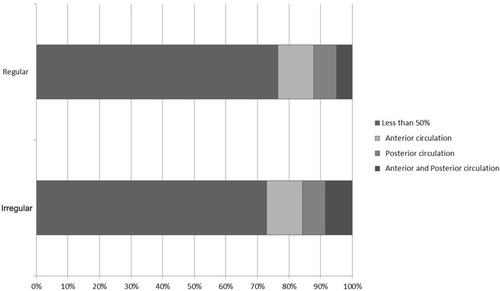Figures & data
Table 1 Distribution of Age, Sex and Locations of Cases and Controls
Table 2 Distribution of Age, Sex and Locations of Cases and Controls in Unruptured IAs
Table 3 Frequency and Odds of Vascular Risk Factors in Cases Compared to Controls
Figure 1 The distribution of the severity of atherosclerosis stenosis in the irregular and regular groups.

Figure 2 The distribution of number of arteries with stenosis, and location of the stenosis in the irregular and regular groups.

Table 4 Frequency and Odds of Vascular Risk Factors in Cases Compared to Controls in Unruptured IAs
Figure 4 (A) A 49-year-old female was found to have an intracranial aneurysm located in the left internal carotid artery. No obvious stenosis was found in parent artery. The diameter of the aneurysm was more than 7 mm, and the aneurysm was found to be irregular in shape with daughter sac. (B) A 60-year-old man was found to have an intracranial aneurysm located in the left internal carotid artery. The parent artery had obvious stenosis. The diameter of the aneurysm was more than 7 mm. It was found that the aneurysm was irregular in shape with daughter sac.


